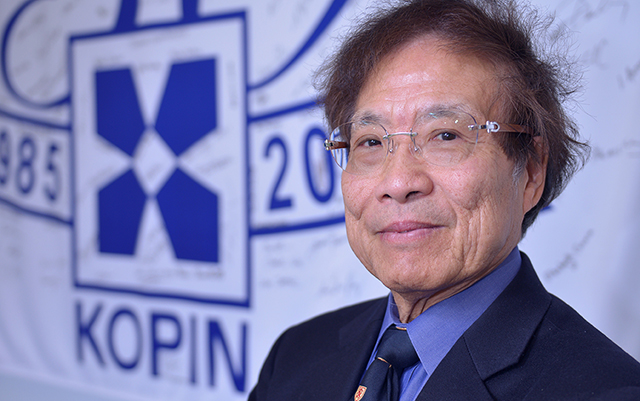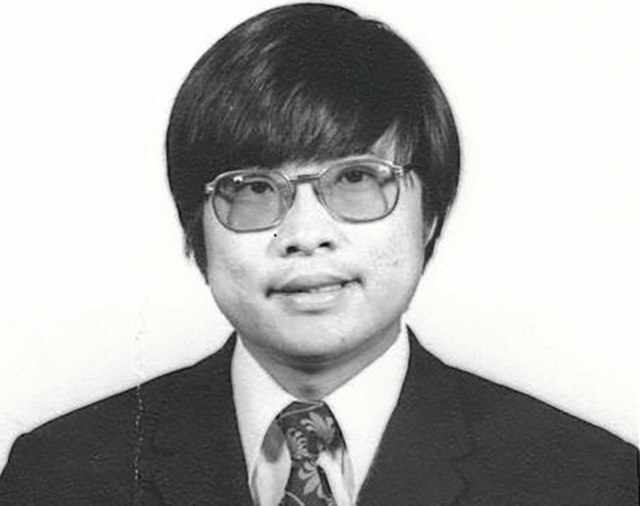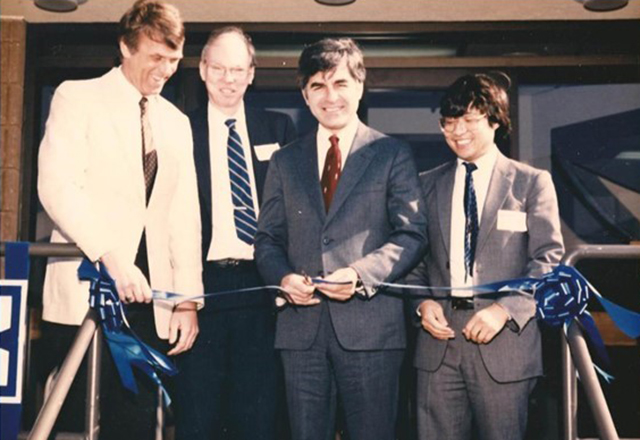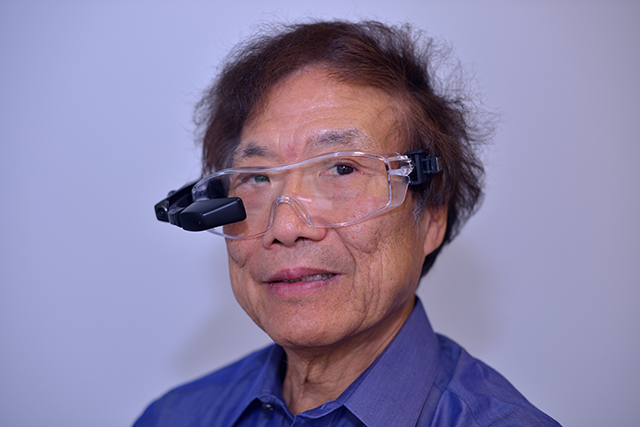A serial innovator, Kopin Corporation founder seeks to enable the next technological revolution
During a trip to a local window store, John Fan and his wife Stephanie were confronted with an over-enthusiastic salesman expounding the technological features of a particular window. The salesmen explained how specialized thermal coatings, which had been developed by scientists at MIT, were so effective at regulating temperature that it was like having an additional pane of glass.
The salesman paused, and looked to see if they were impressed by this technology.
With a slightly sheepish expression, Fan quietly pointed out that he had invented that thermal coating.
Encountering one of his inventions in everyday life is an occupational hazard for Fan, founder and CEO of Kopin Corporation, who earned an applied physics Ph.D. at the Harvard John A. Paulson School of Engineering and Applied Sciences (SEAS) and Graduate School of Arts and Sciences in 1972. He holds more than 80 U.S. patents on technology related to transistor wafers for mobile phones, liquid crystal displays, and mobile consumer devices.
But Fan never expected he would become an inventor.

Fan, founder and CEO of Kopin Corporation, holds more than 80 U.S. patents on technology related to transistor wafers for mobile phones, liquid crystal displays, and mobile consumer devices. (Photo courtesy of Kopin Corporation)
During his childhood in Hong Kong, he was fascinated by stories and heroes of the past. Torn between his love for history and for futuristic technology, Fan chose to study electrical engineering as an undergraduate at the University of California, Berkeley, because he saw more career opportunities in science.
He remained a student of history, which gave him useful insights as he immersed himself in the then-emerging world of semiconductors.
“History gives you perspective,” he said. “Even in science and engineering, it is important to learn from our past. I have always believed that studying history will in some way foretell what will happen in the future.”
Looking to his own future, Fan pursued a Ph.D. at SEAS to gain exposure to a different academic environment. He recalls the words of Dean Harvey Brooks, which inspired his career path.
“During our first orientation, he told us to think about how we can apply engineering and science for society. That is our duty and responsibility,” he said. “That always stayed ingrained in my mind.”

Fan in the late 1960s, around the time he enrolled at Harvard. (Photo courtesy of Kopin Corporation)
For his thesis, Fan studied vanadium oxide, a new material that researchers believed could be used to make very fast electronic switches for computers.
As his experiments progressed, Fan realized the material’s properties were better suited as a thermal switch, and that it had some very useful applications in materials science.
Researchers at MIT noticed this, too, and invited Fan to work with vanadium oxide in the Lincoln Laboratory, where he finished his thesis. His team churned out innovations at a rapid pace, but even as he patented more technologies, he hesitated to call himself an inventor.
“Inventor is a very interesting word,” he said. “You never really invent things fresh. You always step on existing knowledge and previous ideas, and then come up with some new ideas or concepts. That is how I have always been.”
At MIT, Fan began pioneering optical coatings to insulate windows. Then he developed thermal coatings for heat mirrors. From there, he began researching methods to create more efficient solar cells.
For years, researchers had struggled to maximize the efficiency of solar cells, a goal made challenging by the need to combine different types of materials—optical, thermal, and electronic—and enable them to work together in a stack.
“When you put atomic materials together, they behave just like combining different tissues in a living organism—they tend to reject one another. The question is, how do you suppress that rejection?” he said. “These were the days when splicing genes was big news, so we used those same concepts to splice different materials. We called it wafer engineering at the time—now some people call it nanotechnology—and we became world famous.”
Fan licensed more than 30 patents based on that technology and spun his research group out of MIT to found Kopin Corporation in 1984.

The groundbreaking ceremony for the first Kopin facility in Taunton, Mass. From left, Taunton mayor Richard Johnson, MIT Lincoln Lab Director Walter Morrow, Massachusetts Gov. Mike Dukakis, and Fan. (Photo courtesy of Kopin Corporation)
His team applied their novel wafer engineering technology to a number of different projects. They worked on the Reagan administration’s “Star Wars” missile defense system and, when that initiative floundered, turned to consumer applications.
In the early 1990s, Fan’s team pioneered a power transistor that could convert analog signals into digital signals for early-stage cell phones, a technology that is now incorporated in all cell phones.
His team also worked with the Defense Advanced Research Projects Agency (DARPA), which enlisted Kopin to develop a wearable computer for soldiers. Fan’s team created a solid-state screen that could be worn on the battlefield, but the technology was deemed not ready for deployment and the mobile computer project was shelved.
“There was no cloud at the time, so you had to carry the computer around with you, like having a slide rule in your belt. And it was not hands free because you still had to use a keyboard,” he said. “But five years ago, we resurrected that project because now we have the cloud, and we have voice recognition. We decided to move from working with cell phones and handheld devices to putting everything on the body.”
Today, Kopin is applying that technology to create wearable devices that give humans almost super-human capabilities, Fan said. Combining sensors, algorithms, and electronics, the company is working on wearables to help people see in the dark, improve their hearing, and instantly translate speech into other languages.

Fan believes the most significant human improvements won’t come from a biology lab, but rather through hardware and software innovations that help individuals who have lost their natural capabilities, like a digital ear for someone suffering from hearing loss.
“You have to think about what your responsibility is to society,” he said. “We learn, we are educated, and we have certain capabilities, so why wouldn’t we want to do something to better society, to better humans’ experiences?”
And nearly 50 years after he received that inspirational charge from Dean Brooks, Fan shows no signs of slowing down.
“That drive doesn’t stop, not because of your age or your wealth,” he said. “There is an inner drive that keeps me thinking that I can do this, or that. Many of the people who left MIT with me are still with the company. Some of our innovations have changed the world. Maybe we can create the next one.”
Do you have an interesting story you'd like to share with your fellow alumni? We'd love to hear from you! Contact the SEAS Office of Communications.